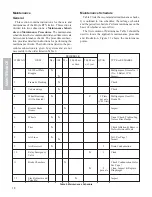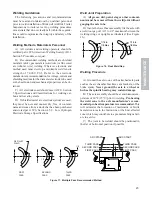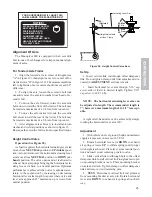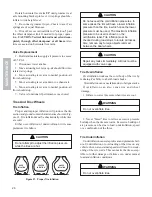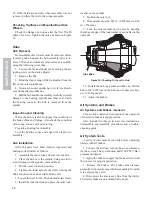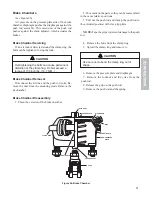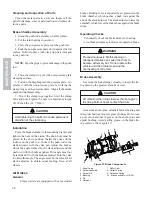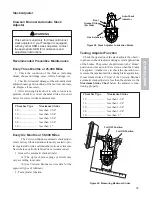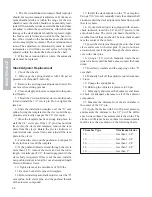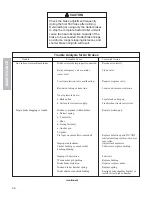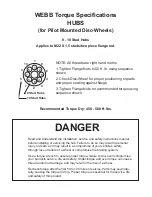
30
MAINTENANCE
will cause a full release of reservoir pressure into the
brake chambers, resulting in full brake application.
Relay Emergency Valve
(see Figure 25)
The relay emergency valve senses the line pressures
and relays the response to the brake chambers. Daily
operating tests are described elsewhere in this manual.
Before conducting further tests, check the tractor air
pressure gauge against an accurate test gauge.
1. Connect the service and emergency lines. When
the pressure reaches 60 -65 PSI (4.14 - 4.48 Bar), the
brakes must automatically release.
2. Apply and release the service brake several times.
Check for prompt brake application and release.
WARNING
Block the wheels during these tests.
3. Release the brakes and stop the engine with the
system pressure between 90 - 100 PSI (6.2 -6.9 Bar). A
two minute check must show a pressure drop of no more
than 6 PSI (0.41 Bar) for the combination vehicle sys-
tem.
4. If step "3" indicates possible leakage, apply soap
suds at the relay emergency valve exhaust port. A one
inch (25.4 mm) soap bubble in not less than five sec-
onds is permissible.
5. Apply soap suds at the pipe plugs and fittings.
Correct all leaks as indicated.
6. With the engine stopped and the pressure at 90 -
100 PSI (6.2 - 6.9 Bar) make and hold a full service
brake application. A two minute check must show a
pressure drop of no more than 8 PSI (0.55 Bar) for the
combination vehicle system.
7. If Step "6" indicates possible leakage, apply soap
suds on the relay emergency valve cover and exhaust
port. A one inch (25.4 mm) bubble in not less than three
seconds is permissible. Correct all leaks as indicated.
8. Place the tractor protection control valve in "emer-
gency" position or close the cutoff valve on the emer-
gency line. Disconnect the emergency line coupling.
The trailer brakes must apply promptly.
Check for leakage at the emergency coupling. A leak
indicates a leaking check valve or O-rings in the relay
emergency valve. Also check the service line. A leak
here indicates leaking O-rings in the relay emergency
valve. Recharge the system. The brakes must release at
65 PSI (4.48 Bar) emergency line pressure.
9. Stop the engine with the system fully charged.
Make a series of foot valve applications. Reduce the
pressure to 30 PSI (2.07 Bar). The trailer brakes must
apply automatically at this pressure or at the emergency
setting the tractor protection equipment.
If the valve does not function properly or leakage
excessive, it must be repaired or replaced.
Figure 25. Relay Emergency Valve
EMERGENCY PISTON
RELAY PISTON
MOUNTING FLANGE
FILTER
ASSY
CHECK
VALVE
EXHAUST COVER
EXHAUST DIAPHRAGM
INLET &
EXHAUST
VALVE
EXHAUST PORT
RESERVOIR PORT



